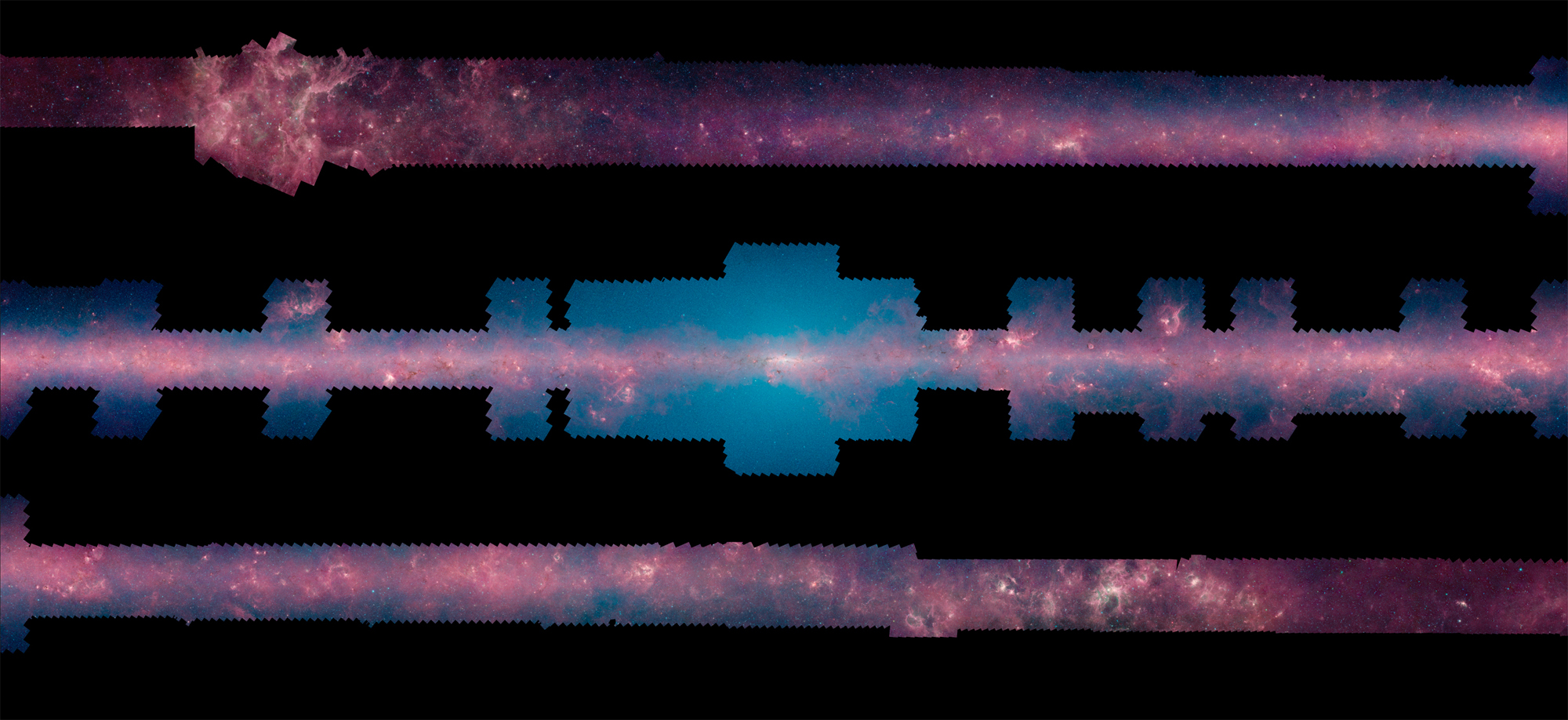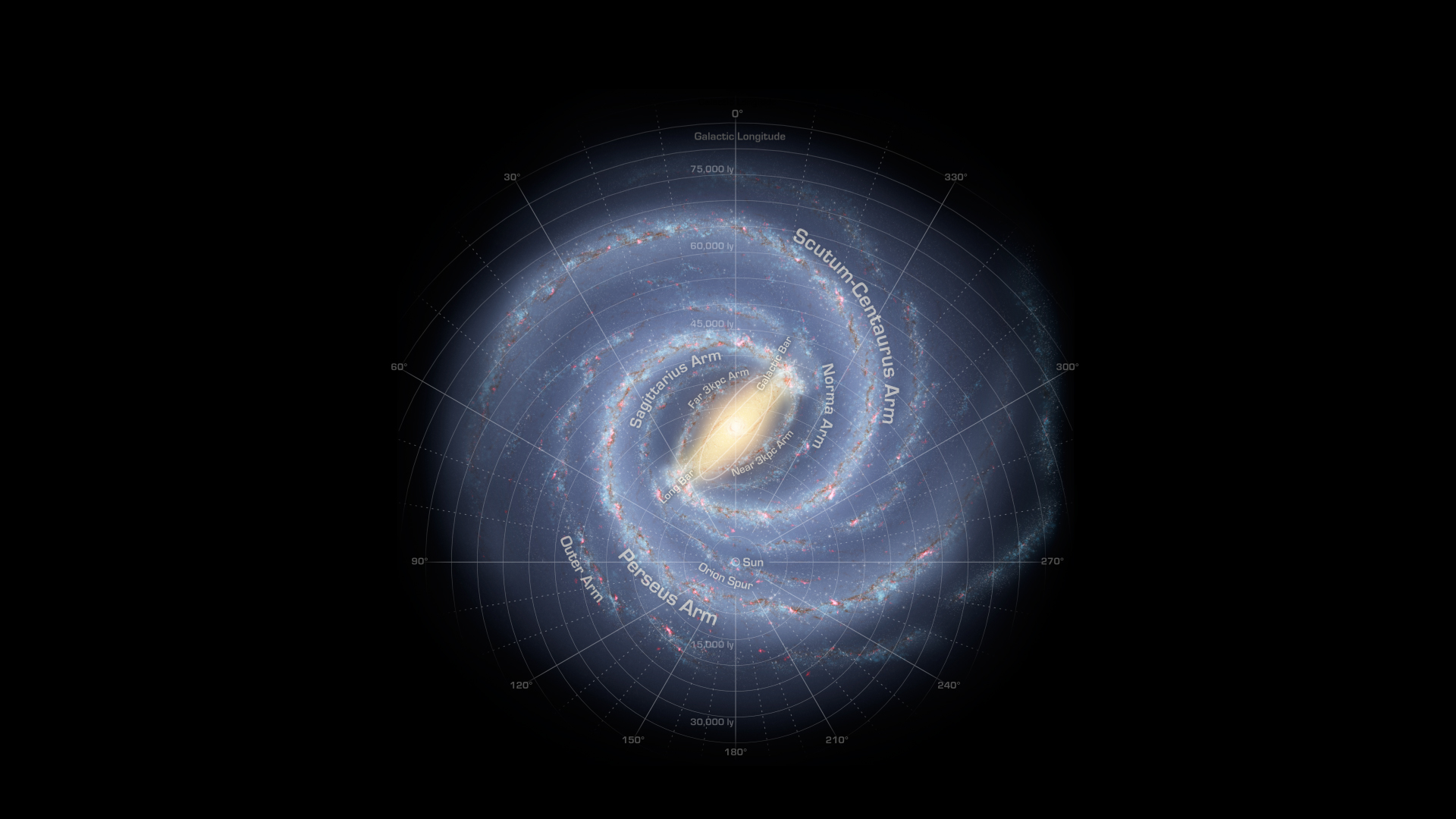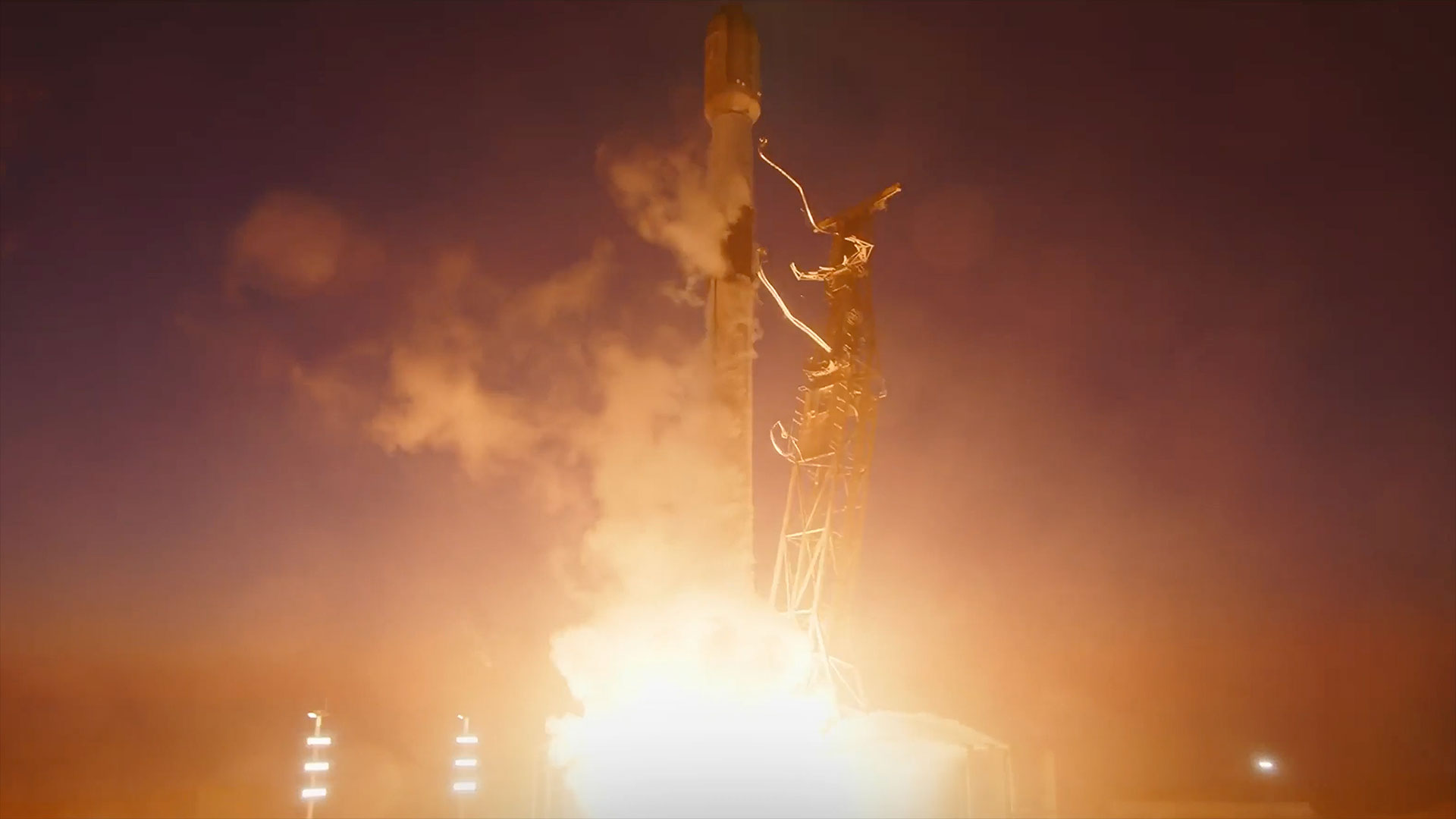See the Milky Way Galaxy Like Never Before in Stunning 360-Degree View (Video)

A new 360-degree view of the Milky Way allows astronomy buffs to explore the galaxy in a comprehensive new way.
Scientists with NASA's Spitzer Space Telescope have created a zoomable mosaic crafted from more than 2 million infrared photos taken during the past 10 years. The 20-gigapixel image represents about 3 percent of the sky, but it encompasses more than half of the galaxy's stars, according to NASA representatives. The new image is also the sharpest infrared panorama of the galaxy ever created, NASA officials said. You can also fly through the mosaic in a narrated video .
"If we actually printed this out, we'd need a billboard as big as the Rose Bowl Stadium to display it," Robert Hurt, an imaging specialist at NASA's Spitzer Space Science Center in Pasadena, Calif., said in a statement. "Instead, we’ve created a digital viewer that anyone, even astronomers, can use." [See more photos of the infrared universe from Spitzer]
Much of the Milky Way mosaic was created using data from the Galactic Legacy Mid-Plane Survey Extraordinaire project (called GLIMPSE), and the mosaic image is hosted by Microsoft’s WorldWide Telescope visualization platform. You can explore the mosaic via Spitzer Space Telescope website. The platform also provides a second viewer that directs observers to special areas of interest in the large mosaic.
By analyzing the GLIMPSE data, scientists have found that the Milky Way is actually larger than previously expected, Spitzer officials said. The images beamed down from the space telescope are also helping scientists understand more about star formation and the outer regions of the Milky Way. Spitzer can spot faint stars on the outskirts of the galaxy.
"There are a whole lot more lower-mass stars seen now with Spitzer on a large scale, allowing for a grand study," Barbara Whitney, co-leader of the GLIMPSE team, said in a statement. "Spitzer is sensitive enough to pick these up and light up the entire 'countryside' with star formation."

"Spitzer is helping us determine where the edge of the galaxy lies," Ed Churchwell, co-leader of the GLIMPSE team at the University of Wisconsin-Madison, said in a statement. "We are mapping the placement of the spiral arms and tracing the shape of the galaxy."
Get the Space.com Newsletter
Breaking space news, the latest updates on rocket launches, skywatching events and more!
Scientists working with the space telescope previously made a 130-degree view of the galaxy, but the new 360-degree mosaic will help direct researchers using NASA's James Webb Space Telescope to find interesting sites of star-formation, Spitzer officials said. The JWST, scheduled for launch in 2018, will be able to make event more detailed infrared observations of the Milky Way.
To explore the entire 360-degree mosaic of the Milky Way, visit: www.spitzer.caltech.edu/glimpse360
Follow Miriam Kramer @mirikramer and Google+. Follow us @Spacedotcom, Facebook and Google+. Original article on Space.com.
Join our Space Forums to keep talking space on the latest missions, night sky and more! And if you have a news tip, correction or comment, let us know at: community@space.com.

Miriam Kramer joined Space.com as a Staff Writer in December 2012. Since then, she has floated in weightlessness on a zero-gravity flight, felt the pull of 4-Gs in a trainer aircraft and watched rockets soar into space from Florida and Virginia. She also served as Space.com's lead space entertainment reporter, and enjoys all aspects of space news, astronomy and commercial spaceflight. Miriam has also presented space stories during live interviews with Fox News and other TV and radio outlets. She originally hails from Knoxville, Tennessee where she and her family would take trips to dark spots on the outskirts of town to watch meteor showers every year. She loves to travel and one day hopes to see the northern lights in person. Miriam is currently a space reporter with Axios, writing the Axios Space newsletter. You can follow Miriam on Twitter.
